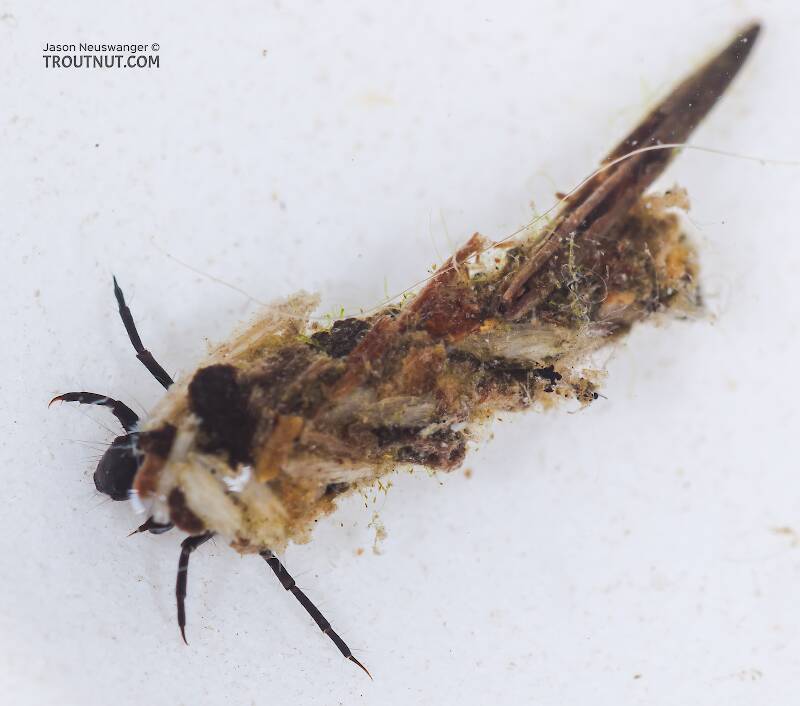
Salmonflies
Pteronarcys californica
The giant Salmonflies of the Western mountains are legendary for their proclivity to elicit consistent dry-fly action and ferocious strikes.
Featured on the forum

This seems to be a young larva of Limnephilus. Although not clear in the picture, several ventral abdominal segments have chloride epithelia.

Troutnut is a project started in 2003 by salmonid ecologist Jason "Troutnut" Neuswanger to help anglers and
fly tyers unabashedly embrace the entomological side of the sport. Learn more about Troutnut or
support the project for an enhanced experience here.
Caddisfly Species Cheumatopsyche pettiti (Little Sister Sedges)
This is the second most important species of Cheumatopsyche.
Where & when
This species is found across the country, including Hawaii.
In 40 records from GBIF, adults of this species have mostly been collected during June (38%), July (25%), August (18%), and May (13%).
Start a Discussion of Cheumatopsyche pettiti
References
- LaFontaine, Gary. 1981. Caddisflies. The Lyons Press.

